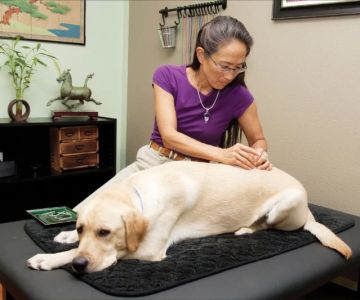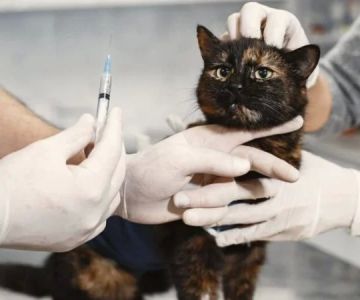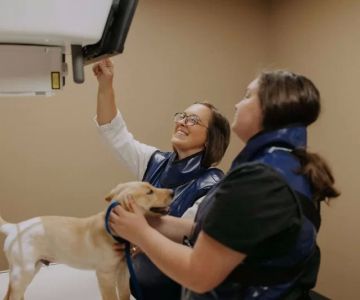How Much School is Required to Become a Veterinarian? A Complete Guide to the Education Path
- Veterinary School Overview
- Steps to Becoming a Veterinarian
- How Long Does It Take to Become a Veterinarian?
- Required Education and Prerequisites
- Real-Life Experience in Veterinary School
- The Cost of Becoming a Veterinarian
If you're passionate about animals and have ever wondered how much school is required to become a veterinarian, you're not alone. Becoming a veterinarian is a highly respected and rewarding career, but it does come with a long educational path. In this article, we’ll break down everything you need to know about the education requirements, the years of schooling involved, and the steps you must take to become a licensed veterinarian.
Veterinary School Overview
Veterinarians play a crucial role in society, diagnosing and treating animals to help improve their quality of life. The path to becoming a veterinarian can seem daunting, especially when considering the education requirements. The journey includes completing undergraduate studies, attending veterinary school, and completing internships or residencies, depending on your career goals. Each step is vital for gaining the knowledge and hands-on experience needed to care for a variety of animals.
So, how much school is required to become a veterinarian? On average, becoming a licensed veterinarian takes about 8 years of education after high school. This includes obtaining a bachelor’s degree, completing veterinary school, and sometimes pursuing additional certifications or training for specialized areas.
Steps to Becoming a Veterinarian
The process of becoming a veterinarian is a step-by-step journey that includes several educational and practical milestones. Here’s an outline of the steps you will need to take:
1. Complete Your Undergraduate Degree
The first step to becoming a veterinarian is earning a bachelor’s degree. While there is no specific major required, many aspiring veterinarians choose fields such as biology, animal science, or chemistry. During this time, you will also need to take courses in subjects like physics, calculus, and animal biology to meet the prerequisites for veterinary school.
2. Gain Experience with Animals
Most veterinary schools require applicants to have hands-on experience with animals. This can include volunteering at animal shelters, working as a veterinary technician, or even shadowing a veterinarian to gain exposure to the profession. This experience helps you build a stronger application and gives you a sense of whether a veterinary career is right for you.
3. Apply to Veterinary School
Once you have completed your undergraduate degree and gained sufficient experience, the next step is applying to veterinary school. Getting accepted into a veterinary program is highly competitive, with many schools requiring a high GPA, strong letters of recommendation, and extensive animal-related experience. The application process often includes entrance exams and interviews.
4. Complete Veterinary School
Veterinary school typically takes four years to complete. The first two years generally focus on classroom learning, where you will study subjects such as anatomy, pharmacology, microbiology, and pathology. In the final two years, you’ll gain hands-on clinical experience, treating real animals in a supervised setting, which prepares you for the demands of the profession.
5. Obtain Licensure and Certification
After completing veterinary school, you must pass the North American Veterinary Licensing Examination (NAVLE) to become a licensed veterinarian in the United States. In addition to the NAVLE, some states require veterinarians to pass a state exam and meet additional requirements.
6. Specialize (Optional)
Some veterinarians choose to specialize in areas such as surgery, dermatology, or cardiology. To specialize, you must complete additional training in the form of an internship or residency. This usually takes 1 to 3 years of additional schooling and hands-on experience, depending on the area of specialization.
How Long Does It Take to Become a Veterinarian?
The total time to become a veterinarian generally takes about 8 years after high school. Here’s a breakdown of the timeline:
- Undergraduate Degree: 4 years
- Veterinary School: 4 years
- Specialization (optional): 1-3 years
While the process can seem long, it is important to remember that becoming a veterinarian is a commitment to a career that will allow you to make a meaningful impact on the lives of animals and their owners. The length of time invested in education ensures that veterinarians are highly qualified to provide the best care possible.
Required Education and Prerequisites
Before applying to veterinary school, you’ll need to meet specific educational requirements. Most veterinary schools require applicants to have completed certain courses during their undergraduate education. Common prerequisites include:
- Biology
- Chemistry (including organic chemistry)
- Physics
- Mathematics (including calculus)
- Animal Science
- English or Communication courses
These courses ensure that you have the foundational knowledge necessary to succeed in veterinary school. Additionally, many veterinary schools also prefer applicants with significant practical experience working with animals, so internships or volunteer work are highly recommended.
Real-Life Experience in Veterinary School
One of the most valuable aspects of veterinary school is the real-life experience you gain working with animals in clinical settings. Throughout the final years of veterinary school, you’ll work alongside experienced veterinarians, diagnosing and treating various animals. This hands-on experience prepares you to handle the diverse cases you will encounter in your career and ensures that you are fully equipped to become a licensed professional.
The Cost of Becoming a Veterinarian
While the road to becoming a veterinarian is rewarding, it can also be expensive. The cost of veterinary school can range from $30,000 to $60,000 per year, depending on whether you attend a public or private institution. This does not include the cost of undergraduate education, books, materials, or living expenses. Many students choose to apply for financial aid, scholarships, and loans to help manage these costs.
Despite the high cost, many veterinarians find that their salaries, which typically range from $70,000 to $150,000 annually depending on specialization and experience, help to offset the investment made in their education.











